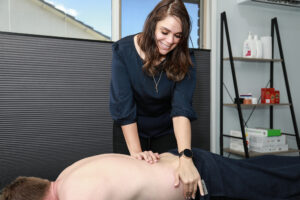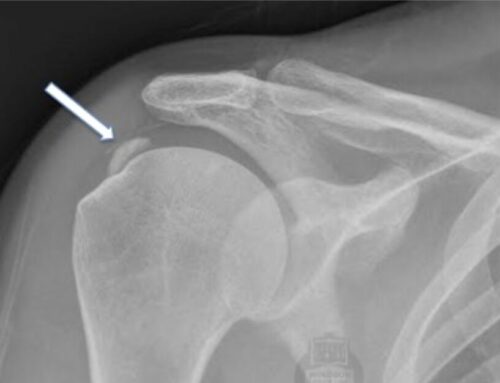Following on from our previous blog “What Can osteopathy Do For Me During and After Pregnancy?“, we have written a guide for future parents so you know what to expect from your (or your partner’s!) body.
 As all mothers, and fathers, know, pregnancy in itself is a big event and can cause some aches and pains before you even go into labor. Pregnancy can lead to some unexpected challenges and musculoskeletal conditions that can impact the mother’s quality of life during pregnancy or even postpartum. This blog will explore the common conditions that affect pregnant women and how osteopathy can help manage them.
As all mothers, and fathers, know, pregnancy in itself is a big event and can cause some aches and pains before you even go into labor. Pregnancy can lead to some unexpected challenges and musculoskeletal conditions that can impact the mother’s quality of life during pregnancy or even postpartum. This blog will explore the common conditions that affect pregnant women and how osteopathy can help manage them.
Low back pain
It is estimated that 50-90% of women will experience back pain during their pregnancy. Because the condition is so common, doctors can often give the impression that it is an unavoidable by-product of pregnancy.
The pain is usually located centrally in the lumbar spine, which is the lower curvature of the back above the buttock region. It can also shoot down the legs to the feet too. It occurs due to the change in the biomechanics of the women’s body. As the baby gets bigger, the woman’s centre of gravity moves forward, increasing the lower spinal curve and tilts the hips forward. This creates extra pressure on the joints and muscles when performing daily activities and work. It can fatigue and tighten muscles or make it more likely to sprain or irritate joints in the low back.
Osteopaths can help with this condition by using multiple techniques and tools to address this issue. These can include:
- Soft tissue massage to help relax muscles and reduce pain
- Mobilisation on the joints in the low back, hips and upper back to get back your range of motion
- Prescribe at home stretching and strengthening exercises to help your muscles cope with the new load being placed on your body
- Prescription of a lumbar support brace to off load the lumbar spine
Pelvic pain
 Pelvic pain can be felt at the back or front of the pelvis at two different joints – the sacroiliac joint (at the back of the pelvis, at the end of your spine), and the pubic symphysis (the front of your pelvis, where your pubic bone is).
Pelvic pain can be felt at the back or front of the pelvis at two different joints – the sacroiliac joint (at the back of the pelvis, at the end of your spine), and the pubic symphysis (the front of your pelvis, where your pubic bone is).
About 25-50% of women experience pelvic pain during pregnancy or postpartum. It can often go undiagnosed and untreated as its thought to be an unavoidable condition with pregnancy and childbirth. The pain can range from feeling like pulling, aching, sharp pain or just uncomfortable stiffness.
Similar to low back pain, biomechanical changes are thought to be the cause of pelvic pain. However closer to childbirth when the hormone relaxin is released and joints become looser to allow the baby to pass through the pelvic bowl, women can experience pain. This is due to the joints being less stable. This can happen earlier in the pregnancy depending on the individual. During childbirth, women can also sprain those joints and have pain postpartum. Some people can be predisposed to this condition during pregnancy if they have a history of low back or pelvic pain before pregnancy or have a demanding / physical job.
Osteopaths can help with this condition by using multiple techniques and tools to address this issue. These can include:
- Soft tissue massage to help relax muscles and reduce pain
- Mobilisation on the joints in the low back, hips and upper back to get back your range of motion
- Prescribe at home stretching and strengthening exercises to help your muscles cope with the new load being placed on your body, such as pelvic floor exercises and gluteal strengthening
- Prescription of a pelvic support brace to off load the pelvis
- Education on lying positions
Hand and wrist pain
Almost 67% of women suffer from pain in their hands or wrist during or after pregnancy. Conditions that women normally suffer are carpal tunnel syndrome or De Quervain’s tenosynovitis. Pain with these conditions can be felt in the fingers, wrist, base of thumb, or palm of the hand.
 Carpal tunnel syndrome occurs when there is compression of the median nerve in the wrist from swelling in the area. Pregnancy can cause increased swelling in the body and relaxation of the ligaments in the body resulting in an increased likelihood of nerve and blood vessel compression. This can present as numbness, tingling or pain in the palm and the first three digits.
Carpal tunnel syndrome occurs when there is compression of the median nerve in the wrist from swelling in the area. Pregnancy can cause increased swelling in the body and relaxation of the ligaments in the body resulting in an increased likelihood of nerve and blood vessel compression. This can present as numbness, tingling or pain in the palm and the first three digits.
De Quervain’s tenosynovitis is an inflammation of the tendons at the base of the thumb and it’s common for the area to feel swollen, hot, and tender. The pain gets worse with moving the thumb away from the palm or other fingers, gripping objects or closing the hand into a fist, and wrist movement towards the direction of the pinky finger. It is common for new mothers to get this in both wrists from repetitive movement from picking up their newborn with the thumbs spread and side to side wrist motion. A resolution typically occurs once the lifting of the child is less frequent.
Osteopaths can help with this condition by using multiple techniques and tools to address this issue. These can include:
- Advice on how you can moderate or change your activity
- Soft tissue massage to help relax muscles and reduce pain
- Mobilisation of the joints in the wrist, hand and elbow to help increase range of motion and reduce stiffness
- Prescribe at home exercises that can stretch, mobilise and strengthen the muscles, nerves and joints in the area
- Suggest possible taping or brace options to help offload the hand and wrist and reduce pain
- Give advice on icing or other possible analgesics to reduce pain and swelling
Calf cramping and ankle swelling
It is very common to get calf cramping and ankle and feet swelling during pregnancy and usually happens towards the end of the day.
There is no specific reason for the calf cramping but it is often thought to be a metabolic imbalance, resulting in a magnesium or calcium deficiency. The best way to deal with a cramp is to stretch the cramping muscle and contract the opposite muscle. A preventive stretching program can be given by your osteopath as well as help with reducing the tightness and pain in the lower leg region through soft tissue massage and mobilisation techniques.
During pregnancy, it is common for women to experience swelling in the feet, ankles, legs and fingers. Swelling is caused by your body retaining more water when you’re pregnant. Throughout the day water builds up in your legs, ankles and feet, especially if the weather is hot or you have been standing a lot.
Swelling that comes on gradually isn’t usually harmful to you or your baby, but it can be uncomfortable. A sudden increase in swelling can be a sign of preeclampsia, a condition that affects some pregnant women, usually during the second half of pregnancy (from around 20 weeks) or soon after the birth. If you feel excessive or fast building swelling anywhere please contact your maternal health nurse or obstetrician-gynaecologist.
Things you can do to try reduce swelling are:
- Avoid standing for long periods
- Wear comfortable shoes and socks
- Try to rest with your feet up as much as you can
- Drink plenty of water
- Try to take regular walks during the day
Osteopaths can also help with draining fluid build up in the area, reduce pain, stiffness and tightness in the ankles and feet and prescribe stretching and foot exercises to reduce swelling.
Diastasis recti abdominis (abdominal separation)
Diastasis refers to the separation of the superficial portion of the abdominal muscles. It is common for most women to experience some separation of the abdominal muscles. However once it gets past a certain amount of separation it is hard for the muscles to recover post birth by themselves. That is when assistance from a health professional is required.
Pain is felt centrally along the abdomen from the sternum to the pubic bone. The uterus expands to accommodate the growing fetus, which stretches the rectus abdominis muscles. This in combination with hormonal elastic changes of connective tissue, leads to the stretching of the abdominal ligaments. Together, it can cause a visible bulging of the abdominal wall. It is more common to present in the third trimester and after multiple pregnancies.
Osteopaths can help with this condition by using multiple techniques and tools to address this issue. These can include:
 Specific stretching and strengthening exercise programs to treat this condition including the abdominal muscles, pelvic floor and back
Specific stretching and strengthening exercise programs to treat this condition including the abdominal muscles, pelvic floor and back- Soft tissue massage to help relax muscles and reduce pain in the area including the back, hips chest and abdomen
- Education on the condition and how you can manage it
- Breathing exercises
- If the condition is progressed further than we are able to help you with then we can help you access other health professionals for their opinion on what treatment option is best for you
We hope that this guide helped inform you about common conditions during pregnancy. If you have any further questions or want to book in for a treatment please contact us at Pakenham Osteopathy on (03) 5941 4157 or visit our website and book online here.




